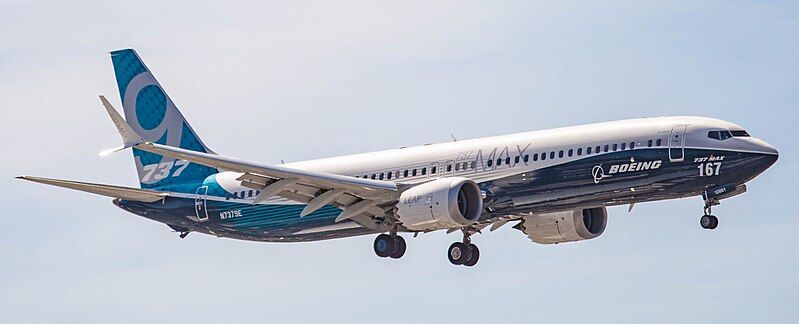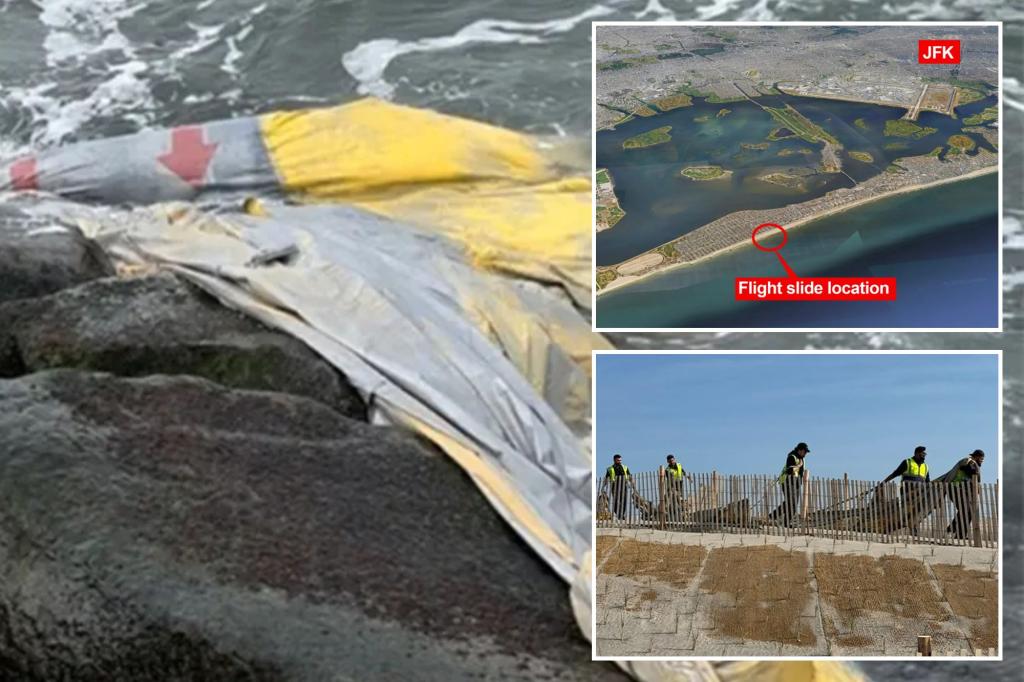ateamer
Pattern Altitude
Almost all security video systems overwrite every 30 days. Very common, almost universal.Latest is they’re claiming they over-wrote the video evidence…
Almost all security video systems overwrite every 30 days. Very common, almost universal.Latest is they’re claiming they over-wrote the video evidence…

 www.avweb.com
www.avweb.com
I always found this type of mentality by the flying public the most interesting. Of all the planes flying which ones are getting the most hands-on attention right now? And which ones are not? After the DC-10 in O'Hare no one wanted to fly 10s so I enjoyed free cabin upgrades and cheaper tickets for a spell until things return to more normal.Well, now comes the inevitable app....
I learned a long time ago, When the heat’s on somebody else, it’s not on you.The aircraft most likely to have a serious inflight issue is the Airbus A329/321 NEO. The engine and gear box assembly should probably be grounded. They have imposed massive inspection and overhual requirements but the problems are getting worse.
Well, at least something is happening...also, head of commercial airlines div, Stan Deal is out immediately, and board chairman to step down at end of year. I don't want to know how many millions of dollars in golden parachutes are going out with these folks...
View attachment 127098


People talk about turning around companies all the time. Maybe just me, but I don't see that happening very often. It's much easier and faster to take something that works and break it, than to take something broken and fix it, across many different disciplines. From running a company to building an airplane to baking a cake. Sometimes it's just simpler to start from scratch.
I’m curious what it would look like if they divested the airline division. From the lay person perspective it seems the current leadership is really focused on the military stuff and the airline business is just on autopilot.It’s rare, I agree, but it can happen. Iacocca and Chrysler might be an example (Iacocca was an engineer, BTW). Even when possible, it may take longer than stockholders’ patience will allow, and then it’s a prime target for acquisition.
I’m curious what it would look like if they divested the airline division. From the lay person perspective it seems the current leadership is really focused on the military stuff and the airline business is just on autopilot.
Without knowing anything it seems like a reasonable way to rebuild the airline side.
Maybe. Spirit was spun off and that didn't work out so well. Now I think I read that they are going to pull Spirit back into the fold.I’m curious what it would look like if they divested the airline division. From the lay person perspective it seems the current leadership is really focused on the military stuff and the airline business is just on autopilot.
Isn't that the whole point of this thread?I’m always interested to read Solutions for major problems running a company from folks who haven’t done so before.
Dude, listen. The only quarterbacking I can do is armchair quarterbacking.I’m always interested to read Solutions for major problems running a company from folks who haven’t done so before.
first off, there is no such thing as a A329. second, there are three different engine choices for the neo and only one has an issue. the carrier affect most is spirit. american has only leap 1a engines on their neos's so they have zero aircraft effected.The aircraft most likely to have a serious inflight issue is the Airbus A329/321 NEO. The engine and gear box assembly should probably be grounded. They have imposed massive inspection and overhual requirements but the problems are getting worse.
You new here?I’m always interested to read Solutions for major problems running a company from folks who haven’t done so before.
After Swain et al and the USAF Program Director et al were jettisoned along with a Directive from DoD to both sets of leadership to “fix it or We’ll forget it “, things were fixed fairly directly. The combination of My direct boss, the new USAF Program Dierector B/G Ron Kadish and the new McD Program Director Don Kozlowski from MacAir figured out what could be done, what was stupid and shouldn’t be done and got on with it. The SecDef telling Stonechiper to keep his GD Nose out of it was of infinite help. In the end, the Program delivered a pretty effective piece of equipment.Over my career in aerospace, I got to see a bit of the "old Boeing" and the "new Boeing", and even a bit of "old v new Boeing". I was mostly on the Defense side, but there was a story folks liked to tell (even though it wasn't quite right) about the 777, which was arguably the last product of the "old Boeing". Here's the story, with corrections afterward:
At the commit decision for the 777 in October 1990 (which is analogous to the DoD Preliminary Design Review), the McDonnell Douglas C-17 was in flight test at Edwards. When the first 777 was delivered to United Airlines in May 1995, the C-17 was...
...still in flight test at Edwards.
Fun story, and almost true. The dates on the triple seven are right, but there's a bit of exaggeration on the C-17. The C-17 had its PDR in 1985, but didn't enter flight test until September 1991, over a year late. So it was SUPPOSED to be in flight test at the 777 commit time. The C-17 also hit IOC (Initial Operational Capability, kinda the same as "in service", and it was apparently "kinda" an IOC) in January of 1995, but as I understand it, there was still testing at Edwards.
Regardless, the bottom line was that the 777 was developed and delivered in less than half the time as the C-17, and met a far larger fraction of its requirements. And what I saw was the "old Boeing", in Puget Sound, completely mobilized around the 777 development and flight test. Yeah, there was stuff that didn't go right, and no one will really say how close to on budget they were, but the 777 was a quality airplane, on time. This kind of commitment and mobilization just didn't happen with the 87, and likely won't ever happen again with Boeing. Alan Mulally ran the 777 program - he's the guy that later went and fixed Ford. Many folks think of this as the last solid Boeing program. The C-17 program, which did not meet a large fraction of the original requirements, was way over budget, and way behind schedule, and was run by Dave Swain and later Harry Stonecipher.
Flash forward a few years and there's a merger, and an evolution of the company. Ultimately, the folks who had previously excelled (Mulally and others) were pushed out, and Swain and Stonecipher and their mediocre pals ended up running things. A sad tale.
--Tony
PS - As an old Puget Sound Boeing guy, I do feel the need to point something out: some of the most effective engineering-focused program managers that I saw were heritage-McDonnell Douglas, and some of the worst business-school pablum-spewing "leaders" were heritage-Boeing, starting with Phil Condit - so the story is a bit more complex than "McDonnel Douglas ruined Boeing".
I would spend a bit of time reading up on the engine. It has lots of problems beyond the contaminated turbine section.first off, there is no such thing as a A329. second, there are three different engine choices for the neo and only one has an issue. the carrier affect most is spirit. american has only leap 1a engines on their neos's so they have zero aircraft effected.
The sight of Bill Boeing was a familiar one on the factory floor. His office was in the building next to the converted boatyard where workers lathed the wood, sewed the fabric wings, and fixed the control wires of the Boeing Model C airplane. there is no authority except facts. facts are obtained by accurate observation read a plaque affixed outside the door. And what could need closer observation than the process of his aircraft being built? One day in 1916, Boeing spotted an imperfectly cut wing rib, dropped it to the floor, and slowly stomped it to bits. “I, for one, will close up shop rather than send out work of this kind,” he declared.
__
The past 30 years may well be remembered as a dark age of U.S. manufacturing. Boeing’s decline illustrates everything that went wrong to bring us here. Fortunately, it also offers a lesson in how to get back out.
Boeing and the Dark Age of American Manufacturing
Interested to see who the next CEO will be. Morbid curiosity more than anything.The legacy of Jack Welch continues.


.....and another one. Of course the plane is 34 years old, but that doesn't change the headline.
File this under "truth is stranger than fiction"

Exclusive | Missing emergency slide that fell off Delta flight found — washed up in front of house of lawyer whose firm is suing Boeing
Jake Bissell-Linsk — a New York attorney whose firm filed a lawsuit against Boeing following the Alaska Airlines door blowout in January — told The Post he got a surprise on Sunday arou…nypost.com
